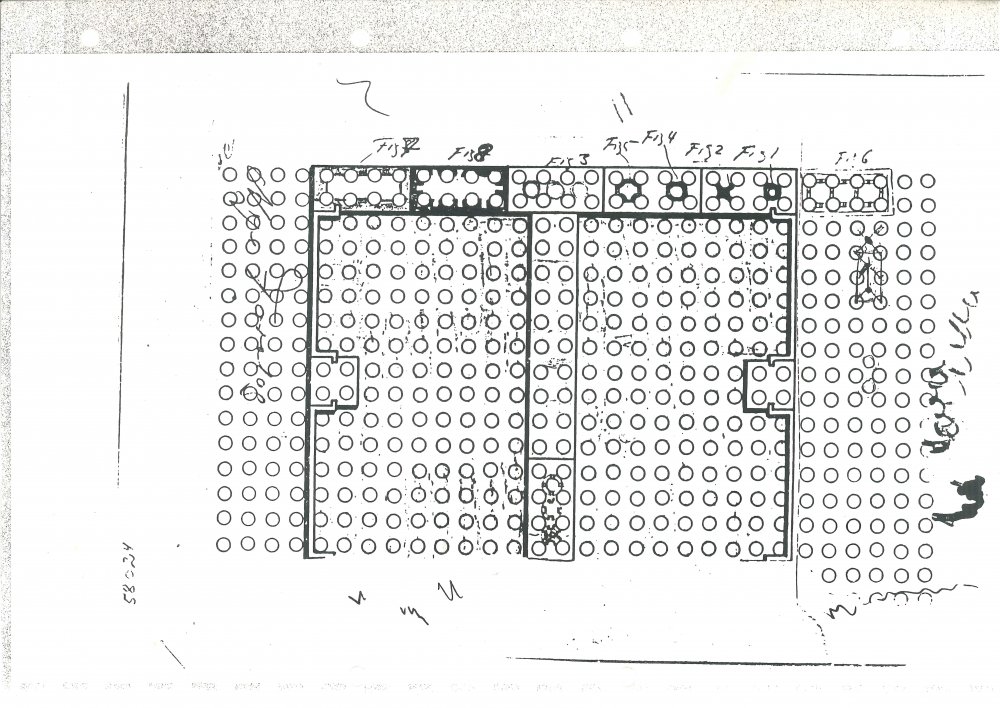
Today is the 100th birthday of former LEGO owner Godtfred Kirk Christiansen and LEGO has shared some never before released details of how the LEGO brick was created. The most interesting one is that the design of the brick was developed and patented in no more than five days. Read the full story below.
100 years ago, today, former LEGO® owner and managing director Godtfred Kirk Christiansen was born. His influence on the company and the success of the LEGO system in play is undeniable, but brand-new research done by our historians in LEGO Idea House shows that his influence on the LEGO brick and the company is even greater than we initially thought.
“For decades we have been unable to give a precise answer to the question of how the LEGO brick was developed, and who was the mastermind behind the design. We have been convinced that it was a lengthy development process carried out by a team of LEGO employees in the mid to late 1950s. Thanks to newly-discovered material, we have found out that Godtfred actually played a pivotal role in developing the LEGO brick that people all over the world love today,” explains Signe Wiese, Corporate Historian from LEGO Idea House.
Here is the never-before-told story of the development of the iconic LEGO brick:
It’s January 23, 1958. Three men are sitting in a LEGO office in Billund. The three men are Godtfred Kirk, his brother Karl Georg (presumably) and Axel Thomsen, head of LEGO sales office in Germany.
The latter explains that he’s getting complaints from his customers in Germany about the fact that models built with the company’s plastic building bricks are lacking stability and clutch power.
The problem is discussed at length, and several ideas and solutions are put forward. At some point, Godtfred finds a piece of paper with circles on, and starts to sketch the different ideas for a new brick design. That same day, Godtfred hands the sketch to Ove Nielsen, then head of the LEGO moulding shop. He is instructed to make a sample of the new brick design with two inner clutch tubes.
One of the first sketches of the design with two inner clutch tubes.
The following day, Godtfred brings his sketches and samples to the office of patent agency Hofman-Bang & Boutard in Copenhagen for them to get started on the work of applying for a patent. However, on his way home to Billund, he ponders over the idea of creating a new design for a brick with three inner clutch tubes instead of two. When he reaches Billund, he has come to the conclusion that three tubes will work better than two, because it will provide even better interlocking action.
He has Ove Nielsen create a new brick sample by cutting up and gluing together existing elements. This new three-tube design is then sent to the patent office with express courier. Only a few days later, on January 28, 1958 at precisely 1.58 pm, the LEGO Group files the application for a patent for a new type of building system. A system in which two or several interlocking plastic building elements can be put together in a great number of mutually different positions – or as it is more widely referred to: The patent of the LEGO brick.
“We’re now able to conclude that it took no more than five days to develop and patent the design of the LEGO brick, and we can also conclude that the mastermind behind this everlasting design was none other than Godtfred himself. I can’t find a more fitting way to celebrate his 100th birthday,” smiles Signe.
When you make a purchase or, sometimes, carry out some other action as direct result of clicking on a link at The Brick Fan, we will receive a small commission.
The Brick Fan is a participant in the Amazon Services LLC Associates Program, an affiliate advertising program designed to provide a means for sites to earn advertising fees by advertising and linking to Amazon.com. As an Amazon Associate I earn from qualifying purchases.
We partner with Rakuten Advertising, who may collect personal information when you interact with our site. The collection and use of this information is subject to the privacy policy located here: https://rakutenadvertising.com/legal-notices/services-privacy-policy/




